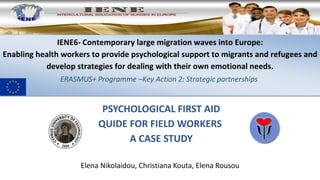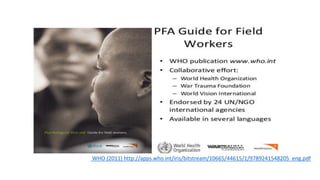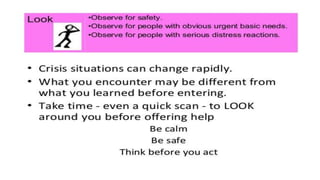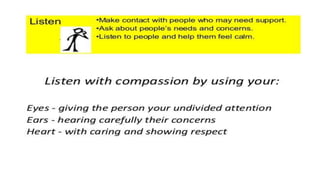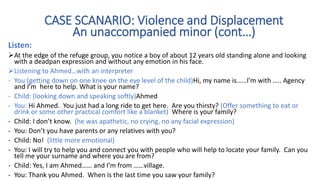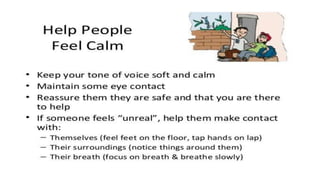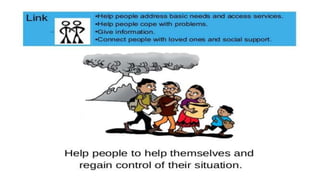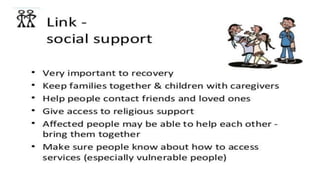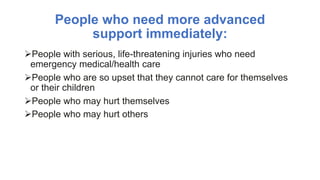This document provides guidance on psychological first aid (PFA) for those assisting refugees and migrants. It defines PFA as a humane and supportive response to people in distress after a traumatic event. The summary outlines key aspects of PFA, including assessing needs, providing practical assistance, listening without pressure, and linking people to services and social supports. A case scenario describes applying PFA when encountering an unaccompanied minor refugee, emphasizing the need to satisfy basic needs, protect from harm, and connect the child to loved ones and services for care.
